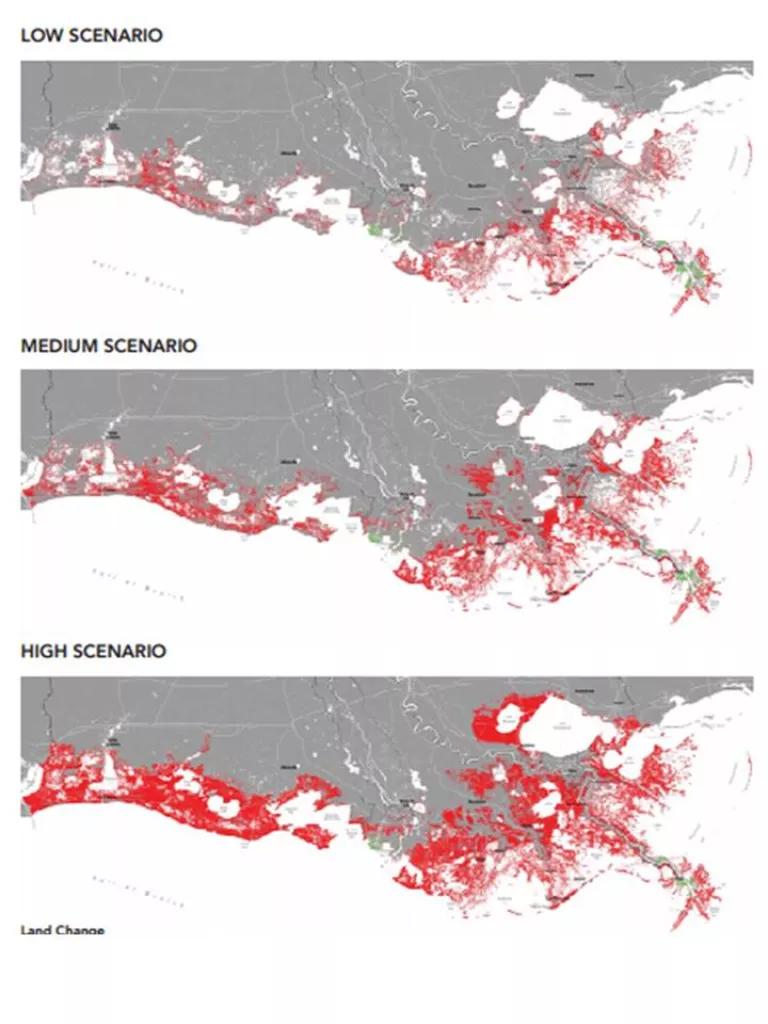
The Mayor of New Orleans, Mitch Landrieu, today presented a Climate Action Plan, a roadmap for the city to reduce its carbon pollution 50% by 2030. The Mayor’s Plan is realistic and actionable, describing specific measures needed in electricity, transportation, waste, and water to prepare the city to grow and thrive into the future.
Mayor Landrieu is also the new President of the U.S. Conference of Mayors. His Plan shows that cities can shape their future, rather than wait passively for worst-case scenarios to materialize.
New Orleans is a city already below sea level, sinking, and surrounded by water. As Mayor Landrieu recently said, addressing climate change, and the carbon pollution causing it, is an existential matter for the people of New Orleans. Anyone who has lived in or even visited New Orleans knows it is a unique city, but mayors of Boston, New York, Washington D.C., Philadelphia, Miami, Los Angeles, and many others in the U.S. and around the world, all make the same point and many are taking strong climate action with similar plans of their own.
One important point is somewhat hidden, but foundational to the Mayor's Plan: A modern, clean electricity system will be cheaper and better for the people of New Orleans, not more expensive as some critics will likely allege.
This point is worth discussion because it's often misunderstood. Some critics try to portray clean energy, such as energy efficiency, solar power, and wind, as merely virtuous and imply it must therefore be costly in some vague way. They will argue that since reducing pollution delivers public benefits, surely it must come at a higher cost as compared business as usual.
Not so. In fact, the evidence is overwhelming that the opposite is true.
Now more than ever before, electric utilities have a fabulous range of options available to power our cities growth. Start with energy efficiency. A recent report from Lawrence Berkeley Laboratories examined thousands of program-years operated by electric utilities in the U.S. They found the cost for a utility to save energy—and thereby obtain power for the system—by insulating houses and schools and installing high efficiency air conditioners, is low. Average cost of less than $0.03 (three cents!) per kWh.
Compare alternative sources of power generation available to utilities. A recent report from the investment firm Lazard examined the costs of a range of a range of resources—solar and wind emerged are least cost. Energy storage technologies give utilities flexibility and new levels of control. Over 100 MW of new solar power were installed in North Carolina alone in the first three months of 2017. (See news report here and see my colleague’s summary of it here).
Clean energy solutions are cheaper and better, as documented in the reports above, even without accounting for many other valuable benefits—reducing pollution, the increased resiliency value of buildings that need less power, lower bills for residents, the local jobs that result from clean energy work, such as weatherizing homes, and more.
The Mayor’s plan calls for 100% low carbon power by 2030. To fulfill this goal, much more will need to be done. For a full discussion of specific pathways to a greater clean energy investments, see our paper Building the Clean Energy Future. But much is already underway:

- Entergy New Orleans, the local utility, has proven it is capable of being good partner in the endeavor. Entergy runs the successful EnergySmart program, which helps customers lower bills by improving their houses, apartments, schools, and offices. The program helps make efficiency repairs to homes and buildings to reduce waste, thereby avoiding the need for new power plants.
- The New Orleans City Council has shown leadership in ramping-up investments in energy efficiency. The current target is 2% annual energy savings, which is an ambitious goal that will benefit all residents of the city.
- New Orleans-based Alliance for Affordable Energy has supported stronger efficiency programs on behalf of consumers, and the Greater New Orleans Housing Alliance shows how greater energy efficiency benefits residents in the Housing NOLA plan. The Energy Efficiency for All project has supported this work.
- New Orleans participates in the City Energy Project, a joint initiative of the NRDC and Institute for Market Transformation to create healthier and more prosperous American cities by improving the energy efficiency of buildings.
New Orleans obtains about half of its electricity today from nuclear power plants. The Mayor’s plan explains “nuclear energy helps keep our greenhouse gas pollution relatively low compared to natural gas or coal. On the other hand, it can be expensive for customers as compared to power from energy efficiency and renewables.” The advantages of efficiency and renewables will likely favor greater investments in these clean resources, reducing the city’s need to rely on nuclear power over time. While low-carbon, nuclear power is neither clean nor renewable and has significant risks.
In sum, the Mayor’s plan shows that cities and leadership matter. As a coastal city on the front lines, what New Orleans does can be meaningful to persuading other cities and states to follow, creating the very collective action that is needed. And, of course, Paris matters. The global community established important obligations and goals in the Paris Climate Agreement. Even if the U.S. does not participate, cities can take action that will help to realize the vital goals established and help position the United States to fulfill these goals when the time comes to rejoin the community of nations in this important endeavor.
